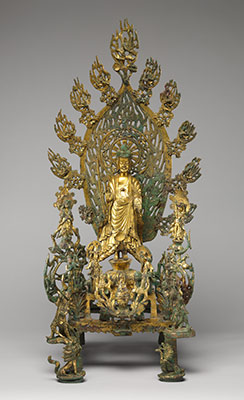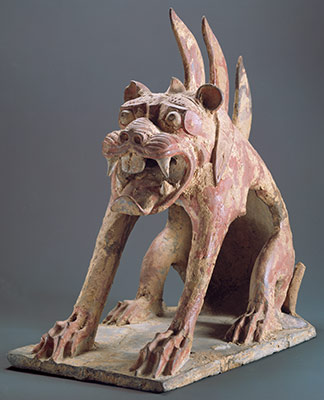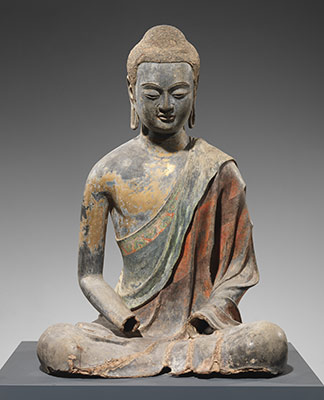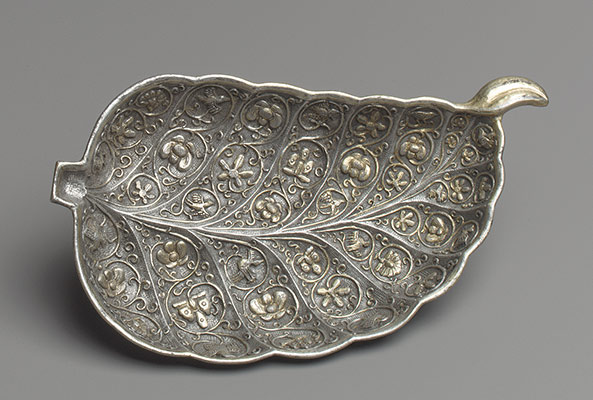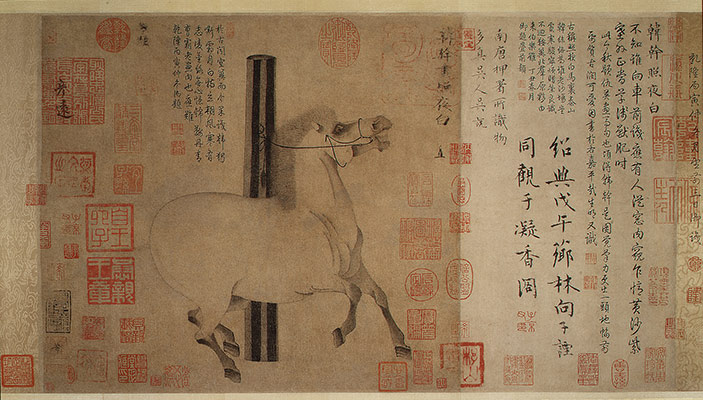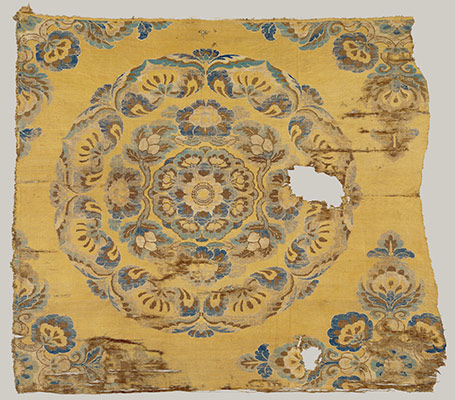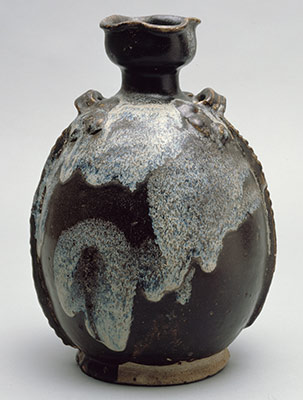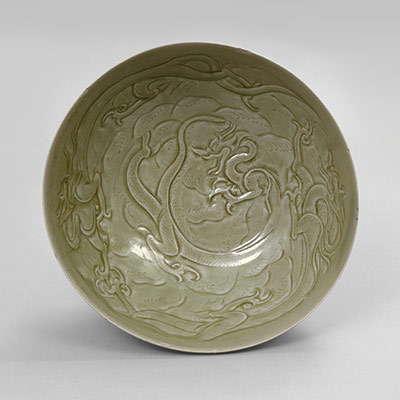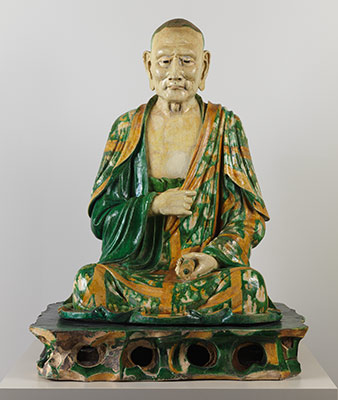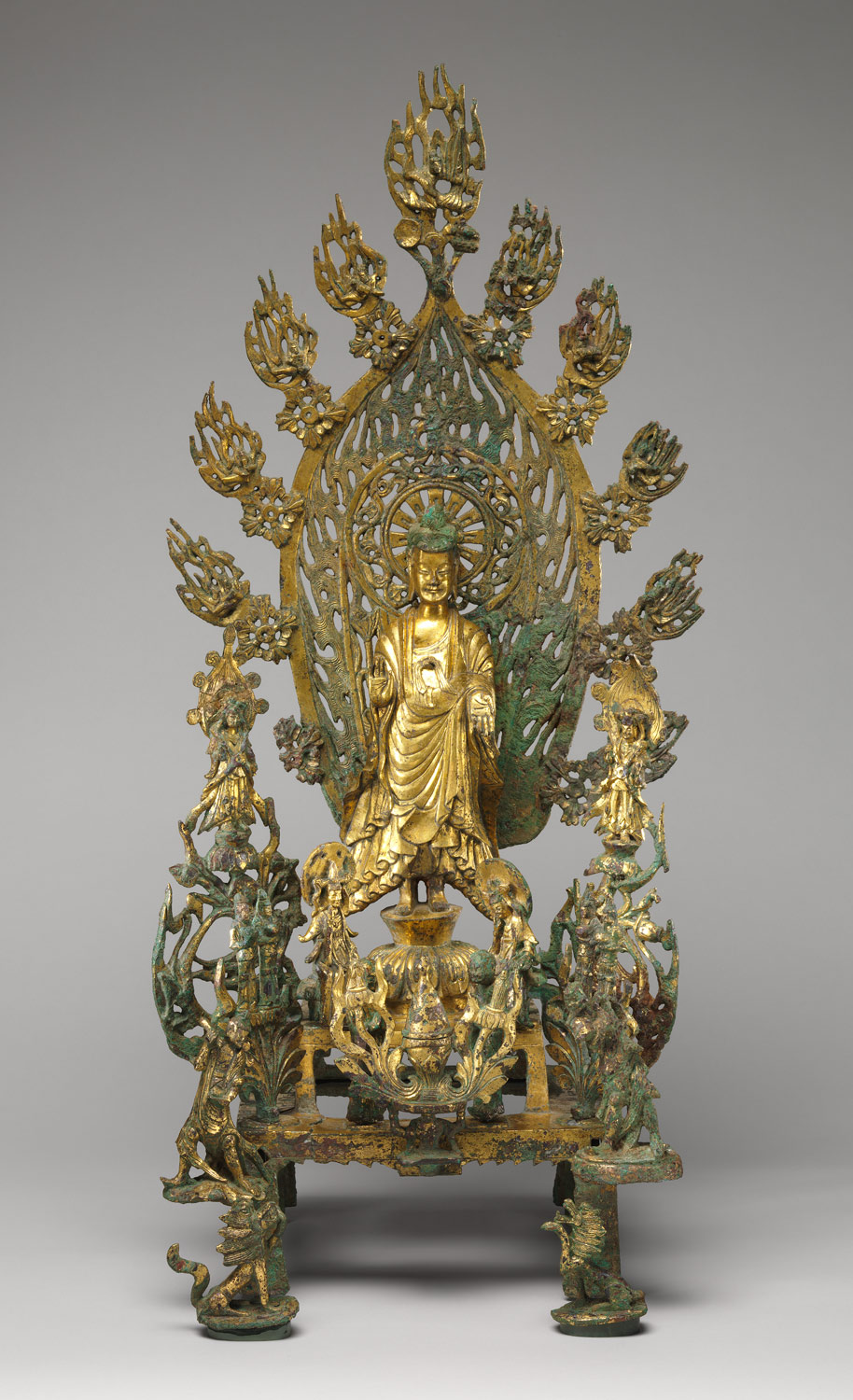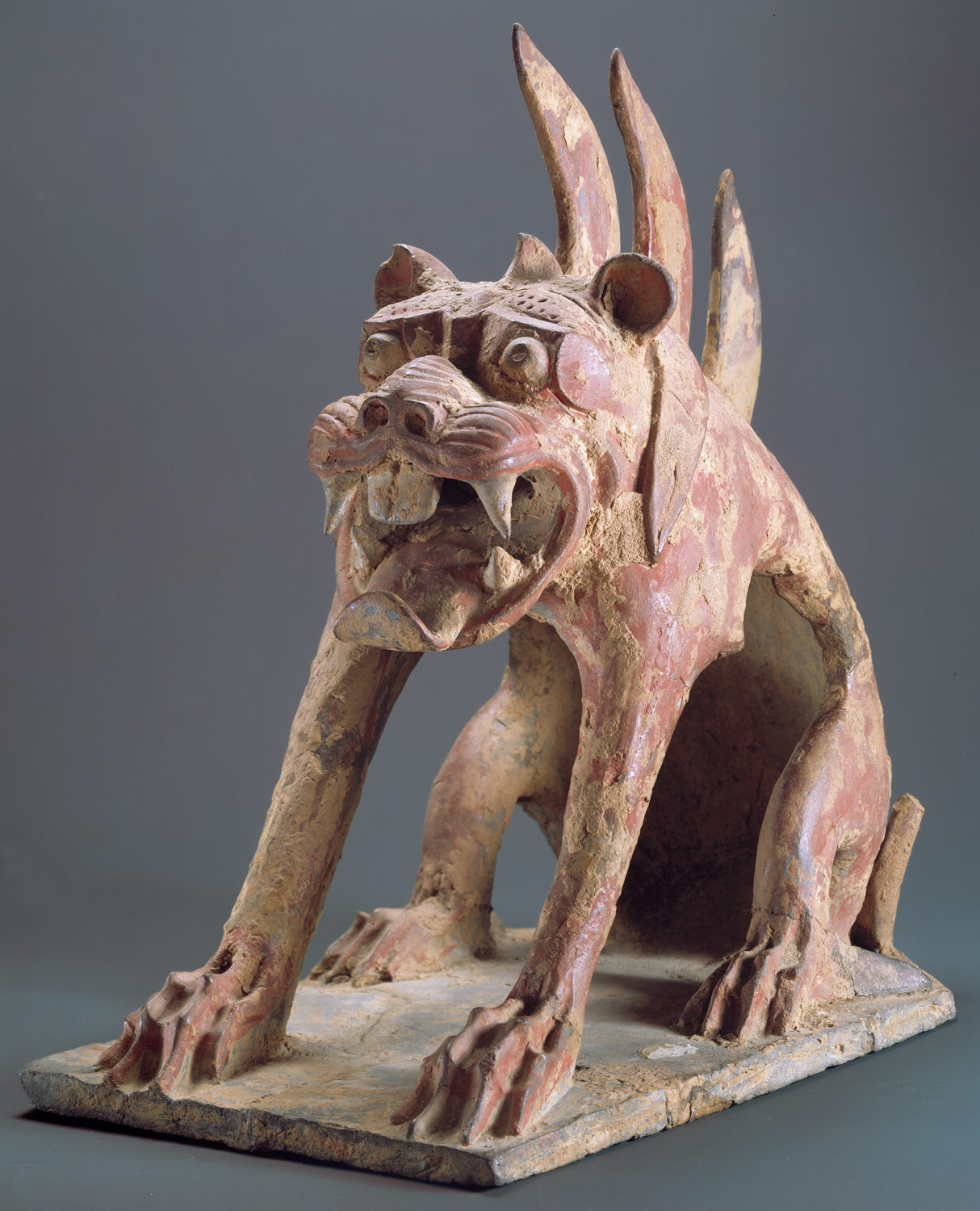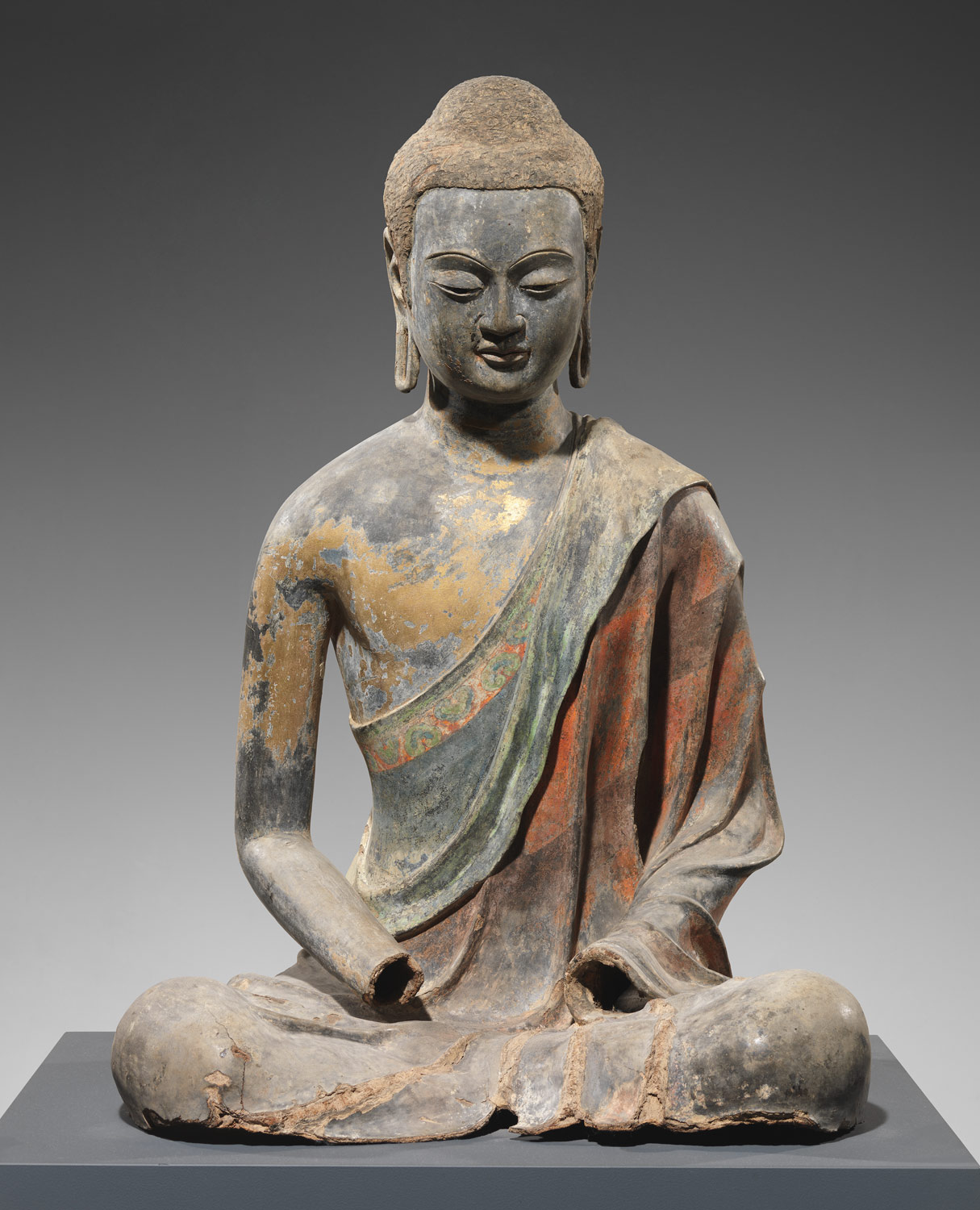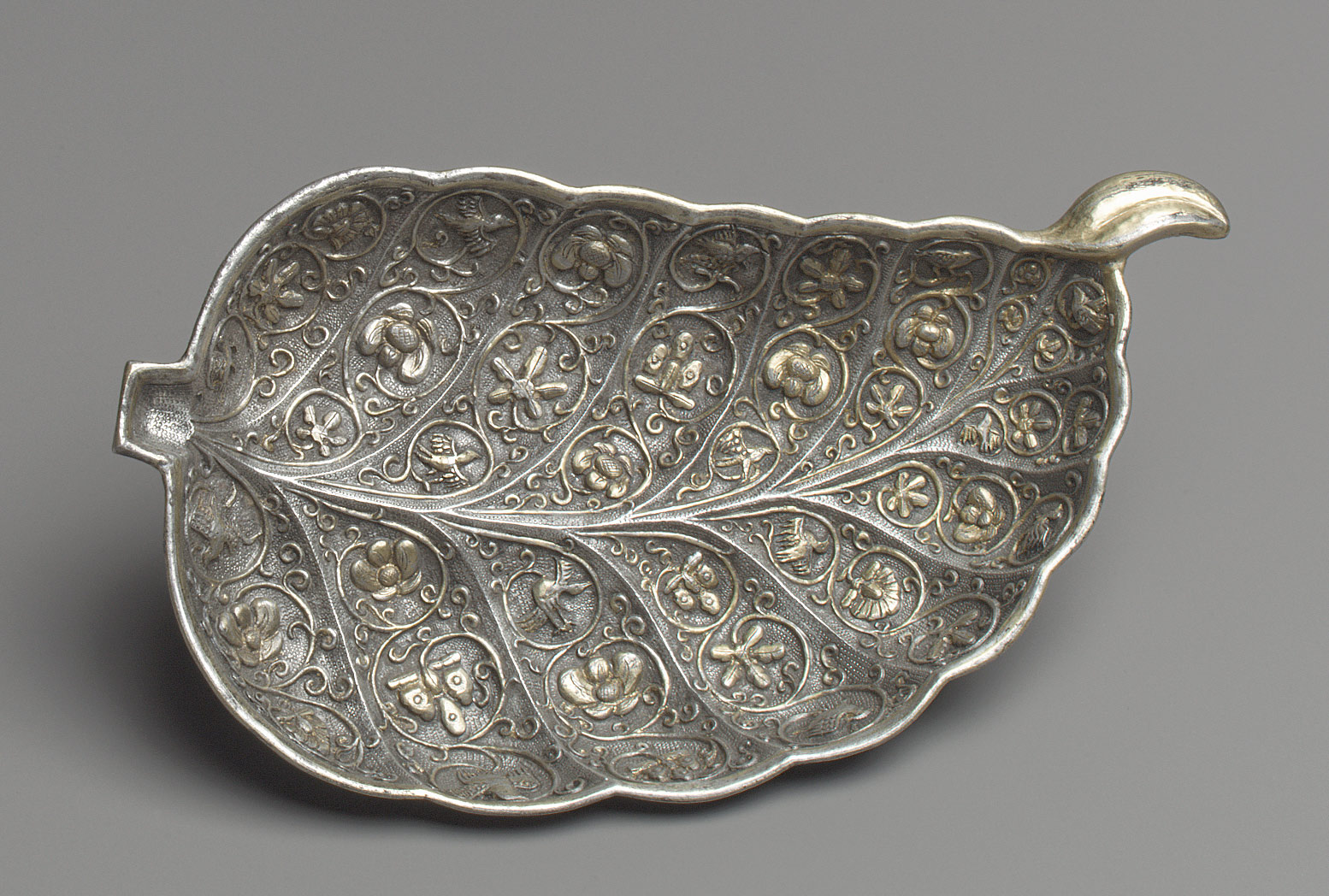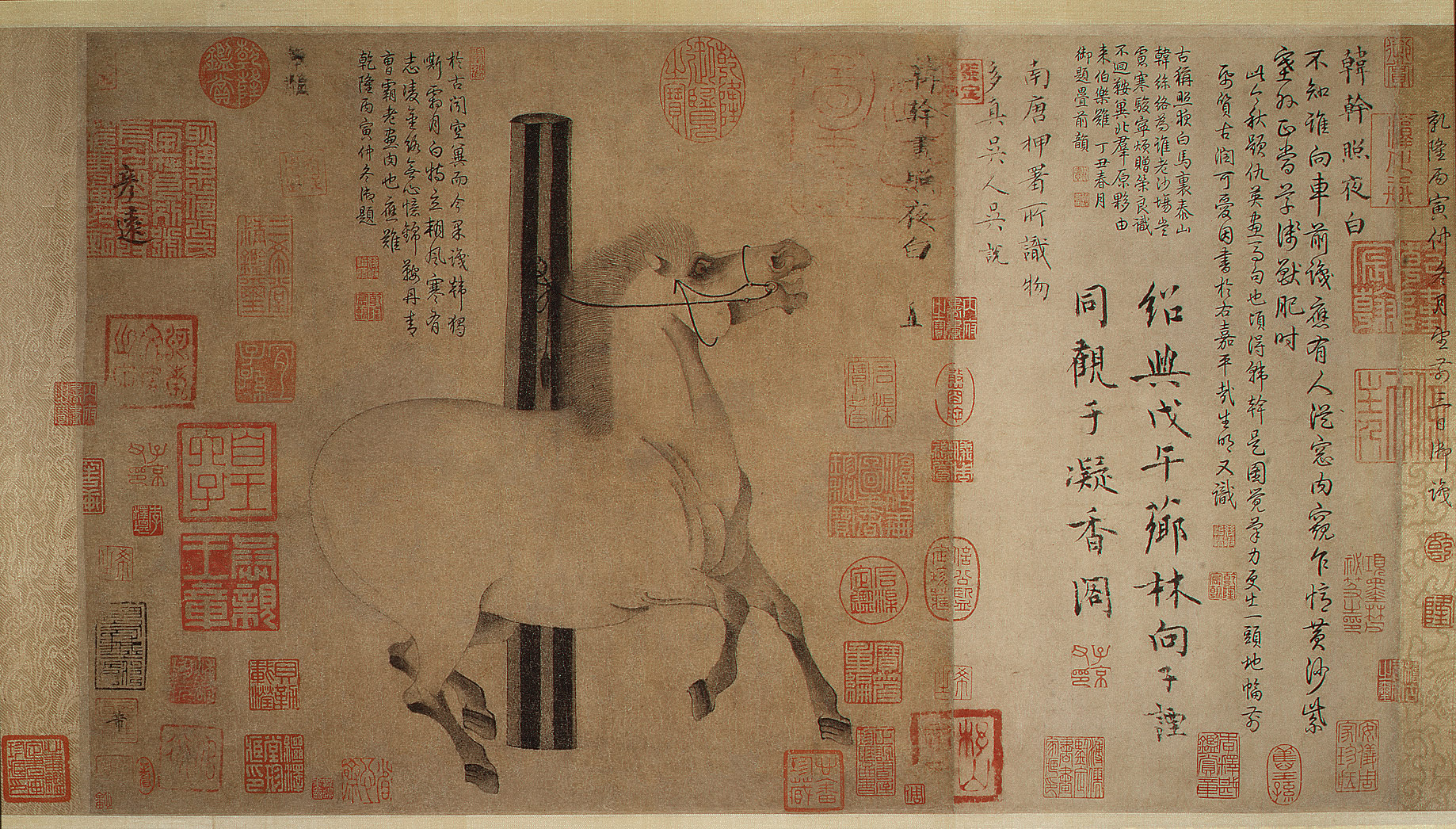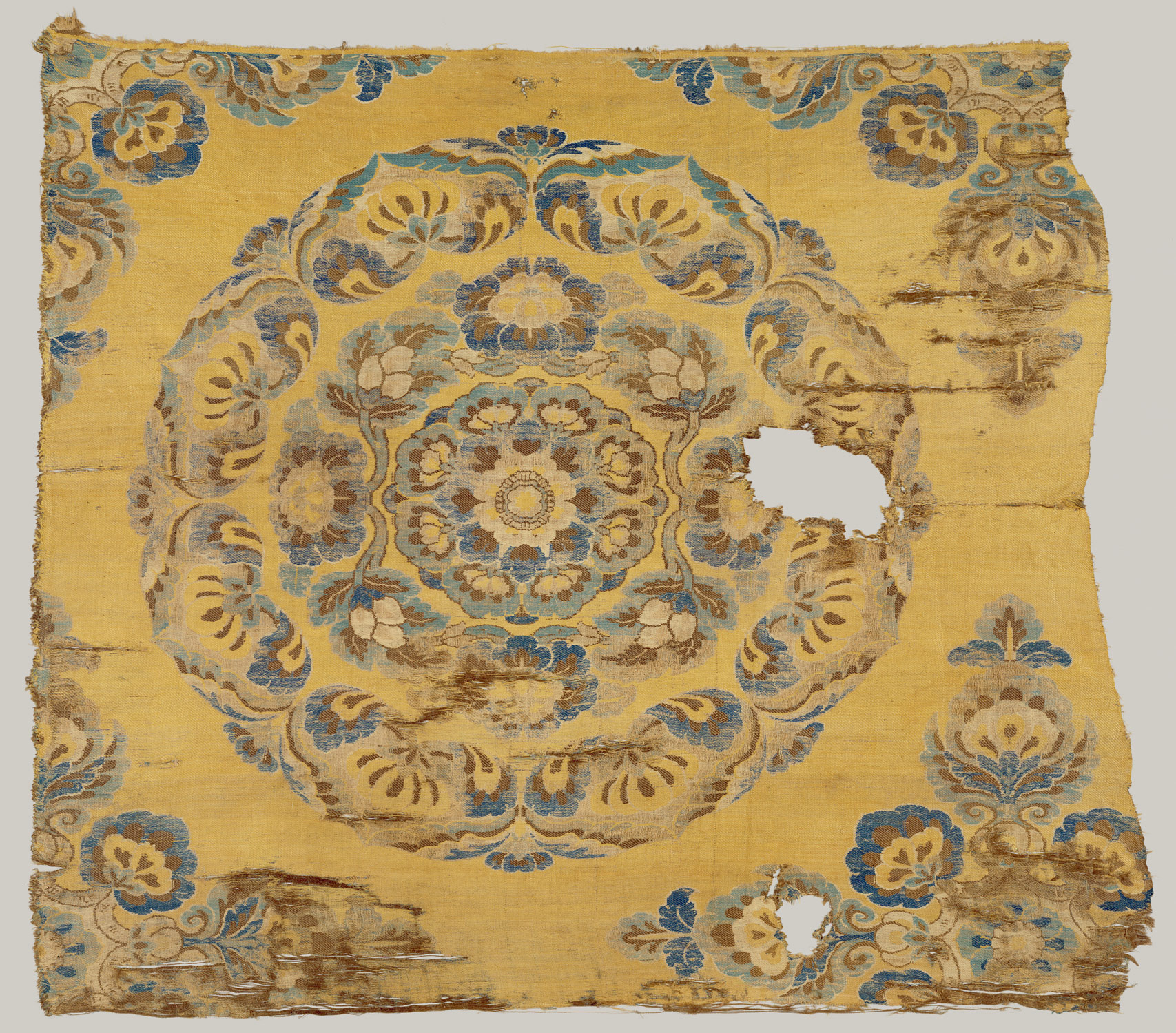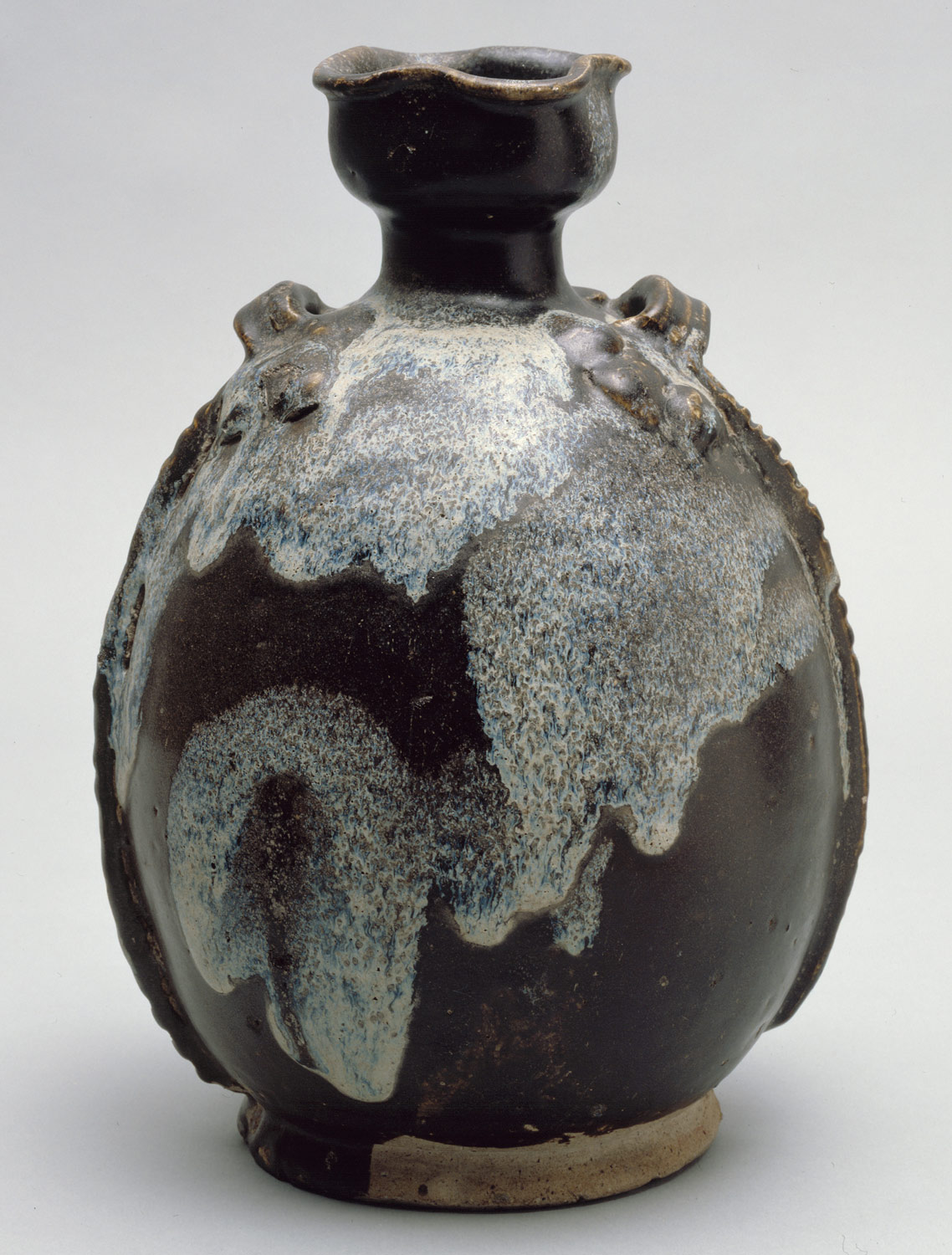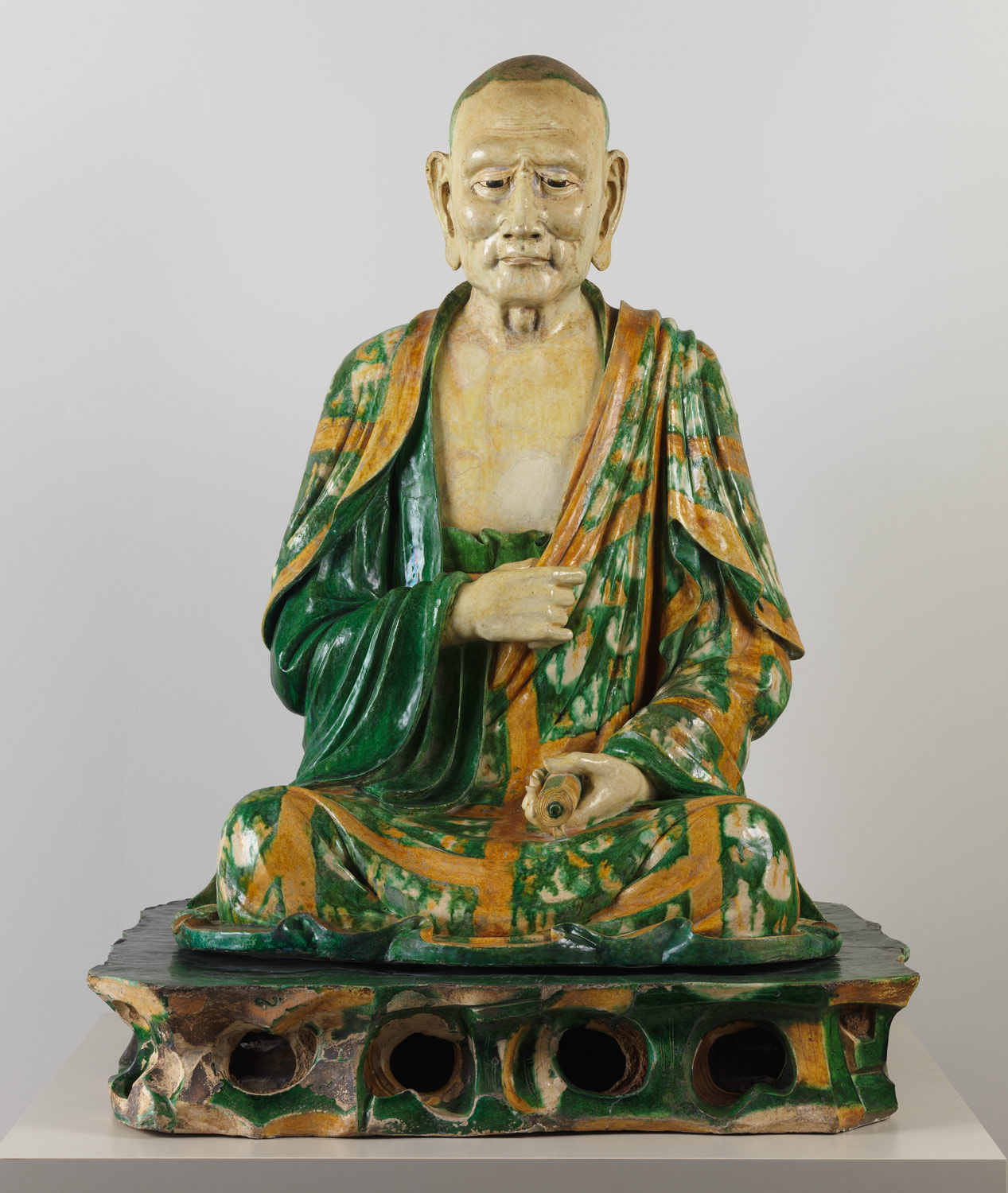In the second half of the sixth century, China, long divided into north and south, is further subdivided into the northwestern and northeastern regions ruled by different factions of the once-powerful Northern Wei empire. The reunification of China under the subsequent Sui and Tang dynasties initiates a period of prosperity, trade relations, and far-reaching influence. Chang’an, the capital, is one of the largest and richest cities in the world. Art and literature flourish, reflecting influences from the different cultures with which China maintains diplomatic and trade relations. In addition to painting and calligraphy, Tang is noted for its Buddhist sculpture, metalwork, and ceramics, both brightly glazed tomb figures and white-bodied vessels. After the fall of the dynasty in 907, China is once again divided into north and south, ruled by competing dynasties and kingdoms.
China, 500–1000 A.D.
Timeline
500 A.D.
625 A.D.
625 A.D.
750 A.D.
750 A.D.
875 A.D.
875 A.D.
1000 A.D.
Overview
Key Events
-
502–557
South China is peaceful and prosperous under the Liang dynasty. The court of Emperor Wu (r. 502–49), a renowned scholar, is a center for artists and patrons. A devout Buddhist, Wu sends Song Yuan to India to collect texts.
-
ca. 520–534
Economic pressures, internal strife, and other factors contribute to the dissolution of the powerful Northern Wei empire and the division of the north into western and eastern factions ruled respectively by the Western Wei and Northern Zhou, and the Eastern Wei and Northern Qi.
-
ca. 530
Xiao Tong (ca. 479–502), eldest son of Liang emperor Wu, compiles the Wenxuan (Literary Selections), a famous anthology of works dating from the Han to the Liang dynasties.
-
581
Yang Jian (541–604) defeats the Northern Zhou and asserts control of the north. By 589, he has united all of China under the rule of the Sui dynasty. As Emperor Wen (r. 581–604), he rebuilds the capital at Chang’an, repairs and expands the Great Wall, and oversees the construction of an enormous canal system linking north and south and northwest and northeast China.
-
ca. 600–700
Scribes begin to use ink seals. These later become ubiquitous, appearing on paintings and works of calligraphy as marks of authorship, ownership, and appreciation.
-
ca. 607
The first Japanese envoy to Sui-period China arrives at the court, reopening trade and cultural relations.
-
618
Li Yuan (566–635), a member of a northern aristocratic family with a long history of government service, usurps the throne, restores order, and establishes the Tang dynasty, ruling as Emperor Gaozu (618–26). His mausoleum and those of his successors are enormous multichambered compounds capped with burial mounds, and approached along spirit roads lined with towering stone figures. During the last fifty years, several of these tombs, as well as the numerous burials of aristocrats and officials that accompany them, have been excavated, providing new material for the study of Tang painting, sculpture, ceramics, and metalwork.
-
629–645
Famous pilgrim Xuanzang travels to India and Southeast Asia. His translations of texts help spur the development of Buddhism in China; his account of his travels, Records of the Western Regions, remains an important document for the study of South Asian history.
-
ca. 651
Arab traders and diplomats introduce Islam to China.
-
ca. 672–675
A colossal image of the Buddha Vairocana with attendants is constructed under the patronage of Empress Wu Zetian (r. 690–705) at the cave-temples at Longmen. Attractive, intelligent, and extraordinarily astute, Wu Zetian is the only woman in Chinese history to rule openly rather than as a regent.
-
699–759
The life of Wang Wei, a seminal figure in poetry and landscape painting and one of several writers who contribute to the extraordinary flourishing of poetry during the Tang. Short, lyric poems in the shi form, often extolling the beauty of nature, remain among the most cherished classics of Chinese literature. Masters include Li Bo (701–762), Du Fu (712–770), Bai Jui (772–846), and Gao Shi (707–765). Members of the scholar-gentry class, they hold government appointments as well as practicing the arts as a form of self-cultivation.
-
ca. 700
The Tang capital at Chang’an (now Xi’an) is the world’s largest and richest city. Nearly 30 miles square, it is divided by fourteen main streets and surrounded by a wall with twelve gateways. An additional palace and a gigantic preserve are located at the back of the city. Merchants and visitors from West, South, Southeast, and East Asia arrive frequently, and Tang China functions as the epicenter of an international culture that is also reflected in the visual arts of Korea and Japan.
-
ca. 700
Porcelain technology evolves in the production of white wares. The most famous are Xing ware made in Hebei Province and Gongxian ware from Henan. Admired for their thinness and purity of color, these wares are sometimes thought to imitate silver vessels.
-
712–756
The reign of Emperor Xuanzong is generally regarded as a classic period of Chinese culture characterized by good government and the flourishing of poetry, music, and calligraphy. His infatuation with the elegantly plump Yang Guifei, toward the end of his life, is often a theme in later poetry and painting.
-
716
Subhakarasimha (637–735), the first of three great teachers of Esoteric Buddhism, arrives in China. He, Vajrabodhi (669–741), and Amoghavajra (705–774) are credited with introducing and fostering an early form of Esoteric tradition in China. Preserved largely in Japanese art, this tradition of Esoteric Buddhism predates the better studied imagery from Tibet.
-
733–804
The lifespan of Lu Yu, author of the Book of Tea, a discussion of the cultivation, processing, and consumption of tea. Used primarily as a medicine, the drinking of tea as a leisure activity becomes popular in the eighth century and spreads to Japan in the early ninth.
-
755–759
An Lushan, a general of Turkish origin, leads a rebellion that, although contained, damages the power and prosperity of the Tang.
-
ca. 800
The ci, a new type of lyric with irregular lines set to a melody, becomes popular. It may have been inspired by folk ballads or by the works of courtesans, who often set their writings to music.
-
ca. 810
“Exchange notes,” negotiable certificates dubbed “flying money,” are in circulation. They are thought to be the precursors of banknotes, widespread by the early eleventh century.
-
ca. 840–846
Partly for economic reasons, the Tang dynasty limits the power and wealth of religious establishments. Measures restricting Buddhist temples and clergy are particularly draconian in 845–46.
-
ca. 868
First mentioned in literature around 835, the technique of woodblock printing is perfected. The earliest extant printed book is an illustrated scroll of the Diamond Sutra unearthed at Dunhuang.
-
907–960
China is controlled by successive short-lived kingdoms in the north and overlapping rulers in the south after the dissolution of the Tang empire. These kingdoms are known collectively as the Five Dynasties and Ten Kingdoms.
-
960
China is united under the rule of the Song dynasty; however, sections are controlled by foreign groups that include the Khitans, a proto-Mongol people from Manchuria who establish the Liao dynasty (907–1125) in the northeast.
Citation
“China, 500–1000 A.D.” In Heilbrunn Timeline of Art History. New York: The Metropolitan Museum of Art, 2000–. http://www.metmuseum.org/toah/ht/?period=06®ion=eac (October 2001)
